How do you teach yoga in schools in a way that is equitable for students of color?
I’ll be honest up front: this might be a tricky topic for some folks to read about, but it’s important.
I’ve struggled with naming it for years, and it’s still hard to discuss with lots of people, even folks that are close to me.
How do you teach yoga, an ancient practice that originated in India, to Black and Brown students in a white dominant culture like the United States?
If you are white, are you teaching a white-washed version of yoga to kids (or adults?)
Should you teach yoga to kids learning English, who speak Spanish or Somali or Arabic at home and whose parents have barely heard what yoga is?
Is yoga too “privileged” to be teaching to kids that are struggling at home, from lower economic households, or impoverished communities?
(Disclaimer: I’m NOT saying that all students of color struggle at home or that those students who speak a different language are not privileged. NO.
I resist the story that “inner city schools’ students are disadvantaged because of their families or backgrounds.”
I disagree with that narrative and that is not the discussion I am here for today.)
BUT it is a fact that many of the students I teach are from disadvantaged backgrounds and lower income families, and they are also 95 % Black and Brown students.
Are there kids yoga lesson plans with an equity mindset?
Yes! But mostly YOU need to embody equity. It’s not just the lesson plan, it’s how you teach to all kids.

One big question is: Is yoga too white?
This is a tough question, and I don’t think there is one right answer.
Yoga obviously did not originate in the United States. It is a more-than-5000-year-old practice and culture that involves so much more than postures, poses, and breathing.
The way we know it today, yoga has certainly become very modernized, Americanized, or White. Some key articles to read more about this are here:
- Yoga Basics: History of Yoga
- A Brief History Of Yoga: From Ancient Hindu Scriptures To The Modern, Westernized Practice
- Yoga in America: the First 100 years
- Yoga Pioneers: How Yoga Came to America
All of this history and the changes that yoga has gone through (in the past 100 years especially) means to some folks, that yoga has been appropriated from the Indian culture and civilization and is nothing like what it was, and therefore should not be practiced by white or non-Indian people.
However, I believe strongly that yoga is for everyone, and that if you teach it the right way, kids yoga lessons can be equitable for everyone.
So what CAN you do to teach a kids yoga lesson with an equity mindset?
- Show kids how to use their bodies in a healthy way to burn off energy, calm down their nerves, and get out frustration.
- Teach kids that they can trust you, talk to you, and give them space to talk about their feelings.
- Let your kids work as a team, in partners, build community, teach and model mutual respect.
- Teach your kids and students yoga through books, stories, and songs that reaffirm their identities and build their sense of self
- Be okay with a little more noise and action. The quiet, submissive, and almost reserved yoga classes that many white folks teach and expect should not be the norm in classes with more Black and Brown students. Many of these kiddos feel more comfortable with a little more noise, energizing music, commotion, and community. Respect that!
Being a yoga teacher, especially for kids in a primarily non-white school that is focused on equity, means I needed to learn more about the history and culture behind the practice.
I need to be honest with myself and my students about where yoga comes from and how I came to teach it.
And most importantly, as a teacher in a public school, I need to be upfront about the fact that I am teaching the physical benefits and emotional feedback loop to children.
I am NOT diving into the spiritual side that is very central to the original culture of yoga.
I am not teaching yoga to them in the way that it was originally intended to be taught, but I am providing them with the relevant tools and exercises that I think they can use to succeed in school.
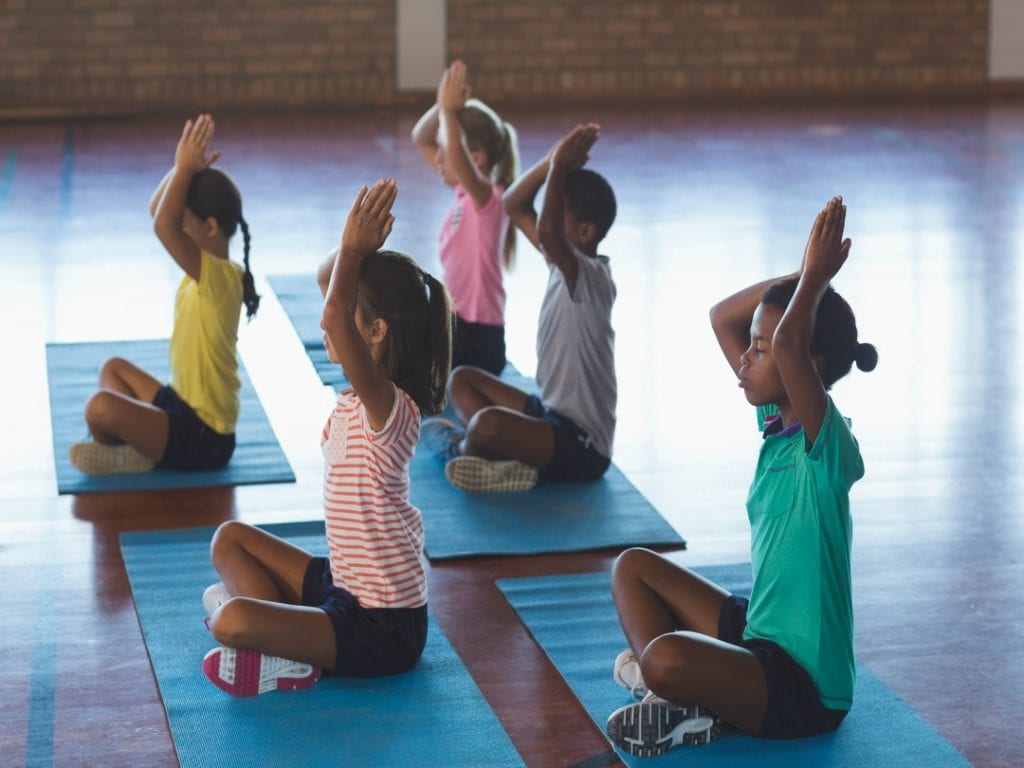
Yoga in the way that it is taught these days in many American schools can allow students ways to express themselves and see their culture reflected back at them.
It also provides amazing physical benefits.
But it takes work. And I don’t know all the answers.
I do know that it takes listening to your students, meeting their needs, allowing them some freedom in the classroom, and providing them with a “window and a mirror”. This means we are providing them with books, visuals, stories, and songs that allow them to see their own culture and experiences and have something to identify with.
This also means that you aren’t teaching them yoga in the way that YOU necessarily want to do it or learn it, but how it will best fit them.
You don’t usually teach kids about the way your core gets stronger or your hamstrings become more flexible.
You might not talk about the way your mind feels empty and calm and worry-free. (You might! But it might not be applicable to students who are constantly worrying about whether or not someone will be home to meet them when they get off the bus.)
As a kids yoga teacher in a mostly non-white public school I have long struggled with how to make my classes more equitable with my kids yoga lesson plans.

I have constantly asked myself the question: am I qualified as a young middle-class white woman to teach these black and brown students how to do yoga? I still don’t think I am some days.
But other days I know I’m doing something right when the grumpy students are hugging me, giving me letters telling me how good they feel after yoga, and when I watch them create routines and share with their friends and families.
I have a LOT more to say on this topic. It’s important. And needs to be discussed more!
I will be writing more about my thoughts on teaching yoga to students of color, and particularly students with trauma (many of the kids at my school). Please email me or comment below if you have thoughts or questions on this topic especially!
BUT for today, I have a short yoga series and an equity based lesson plan that I wrote when I was really struggling to get more content in front of my kids that would reflect them.
Another side note: just providing students with books and images that reflect their culture and their history isn’t enough. It’s a good place to start, though, which is why I’m starting here.
For a whole list of regular books that are excellent for kids yoga stories, check out this post here. I have a lot of books listed that are diverse and representing kids of many cultures (and not just the stories of struggle, but their everyday lives).
Library Books for Teaching Kids Yoga
I looked through a dozen books and stories and settled on the book: Follow the Drinking Gourd for a good kids yoga lesson plan.
Follow the Drinking Gourd is a book that recounts the story of an old white man, “Peg-leg Joe” who helped lead slaves to freedom on the Underground Railroad by teaching them a song to follow the “Drinking Gourd” (the Big Dipper!)
It was a story that some of my students in 2nd grade already knew and felt very connected to. They were learning about the history of slavery in 4th grade as well, so it tied in nicely. If you want, this could be a short lesson (1 class) or you could build it up into several classes.
Then I know I’m reaching them, and I’m leaving an impression on them to help them take care of themselves. And that is my main goal: wellness, self-care, and physical exercise.
A good way for us to start class is by doing a Yoga Flow. A yoga flow sequence, images and descriptions here, has been just the right amount of movement, noise, physical activity, and community building for my diverse and active classroom.
There is a video of a person reading the story aloud, too, that you can watch if you want, here.
Here’s the song version of Follow the Drinking Gourd for a Yoga Lesson Plan
Grab the whole kid’s yoga lesson plan, song verses, and photos when you join the Free Resouces Library!
Here are some ideas for how to structure a kids yoga lesson based on the book Follow the Drinking Gourd by Jeanette Winter
Ground in
Teach the kids a balance pose from the lesson, falling star.
Start with finding balance on one side, then the other. Rock back and forth a few times to speed up, the hold on one side, then the other. Ask them what other balance poses they know and can share with the group.
Practice ragdoll pose with loud exhales to let energy out.
Ask
Provide the group with a “talking piece,” something you pass around the circle to designate who is the person speaking. Everyone else listens (even the teacher!).
Pose the question: Who is someone in your who has helped you? How did they help you? Start with your own example.
Build and Prepare
Once the talking piece comes back to you, reflect on a few things the kids said so they know they were heard. Then let them know you have a story to share with them. If you like, preview a few poses and tell them you have a challenge.
If they can listen for the specific words [ie: drinking gourd, or quail] then they should quickly on their spot do the correct pose. Depending on their age you can let them try the challenge with one or up to three different poses. This helps keep their attention on the story.
Share
Read the story, Follow the Drinking Gourd. Or, watch this video.
Let the students do the appropriate poses and praise them for remembering! If you have time, ask leading questions to tie back to the original prompt (Who is helping the slaves? Why do you think he is doing that? How do you think they feel? Etc).
And at the end of the story, you can ask the kids to share or comment if you have time.
Do the poses to the song!
These are the yoga poses and the actions we did to the song. I prepped the kiddos that we would get to do a sequence to retell the story in a song, in fact, the SAME song the Peg leg Joe taught the slaves! (According to some folktales).
It ends up being pretty quick if you do the sequence to this video so I let them learn the song and then we sang it ourselves a little slower. For each time the phrase “follow the drinking gourd” was repeated, we would just switch to the other foot to balance in the falling star pose. It gave it a nice rocking rhythm.
Here’s a link to the book from Amazon, too if you need it!
Follow the Drinking Gourd, By Jeanette Winter
The whole text of the song is here, scroll down to see the poses!
When the sun comes back (upward mountain pose)
And the first quail calls (warrior 3 pose)
Follow the drinking gourd (falling star pose)
For the old man is waiting (modified dancer pose)
For to carry you to freedom
Follow the drinking gourd (falling star pose)
Follow the drinking gourd (falling star pose)
Follow the drinking gourd (falling star pose)
For the old man is waiting (dancer pose)
For to carry you to freedom
Follow the drinking gourd (falling star pose)
Now the riverbank’ll make (seated forward fold)
a mighty good road (upward plank)
The dead trees will show you the way (tree pose)
Left foot, peg foot, traveling on (dancer pose)
Follow the drinking gourd (falling star pose)
Follow the drinking gourd (falling star pose)
Follow the drinking gourd (falling star pose)
For the old man is waiting (dancer pose)
For to carry you to freedom
Follow the drinking gourd (falling star pose)
Now the river ends (seated forward fold)
Between two hills (downward dog pose)
Follow the drinking gourd (STAY in DOWN DOG!)
There’s another river on the other side (seated forward fold)
Follow the drinking gourd (falling star pose)
Follow the drinking gourd (falling star pose)
Follow the drinking gourd (falling star pose)
For the old man is waiting (dancer pose)
For to carry you to freedom
Follow the drinking gourd (falling star pose)
When the great big river meets the little river (seated forward fold)
Follow the drinking gourd (falling star pose)
For the old man is waiting (dancer pose)
For to carry you to freedom
Follow the drinking gourd (falling star pose)
Follow the drinking gourd (falling star pose)
Follow the drinking gourd (falling star pose)
For the old man is waiting (dancer pose)
For to carry you to freedom
Follow the drinking gourd (falling star pose)

Tadasana (upward Mountain)

Warrior 3
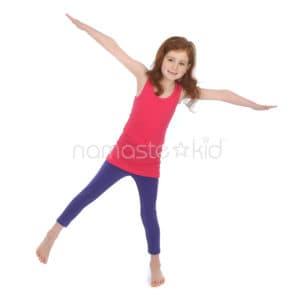
Falling Star

Modified Dancer
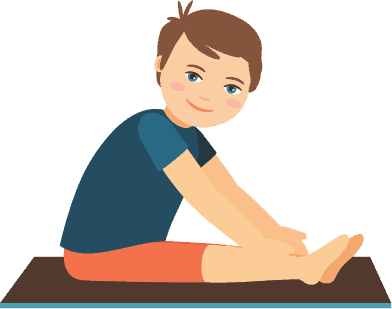
Seated Forward Fold

Upward Plank

Tree Pose
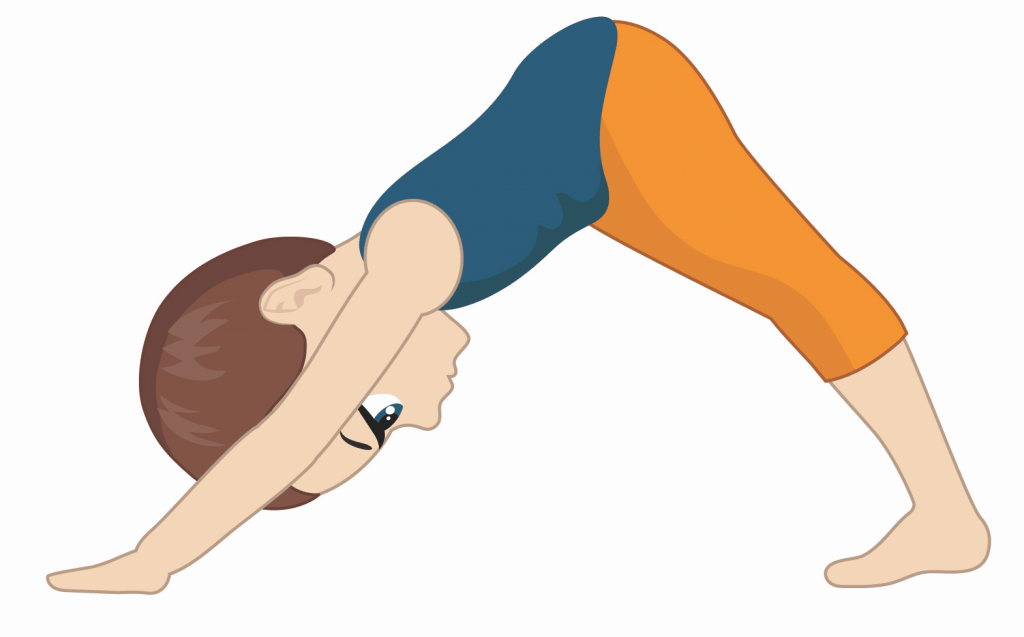
Downward Dog
Follow up
After practicing the song, and maybe creating a few new poses if you like with them, I let them share again. We either would talk about how the story was about a person who was selfless (helping just to help, not getting anything in return) or we would talk about ways we could help others. Sometimes we would do both!
Closing
At the end of class, we always lay down in savasana and rest. During their rest time, I usually guided them in some imagery, mostly about following stars, making a wish on a star, or remembering how that someone important helped them and how good it felt to be noticed and thought of.
Ok, there you have it! It’s a longer song, and very repetitive, but honestly my kids just loved it. They requested to do it over and over again, and it was fun to watch them teach it to their parents and siblings at our Art’s Night last year.
This song and sequence were so popular with some classes that I would just mention it a couple weeks later and they’d all start singing and doing the actions together. It was so powerful! There’s something magical about songs and movement and triggering your memory.
I hope you and your kids enjoy this lesson plan as much as we did!





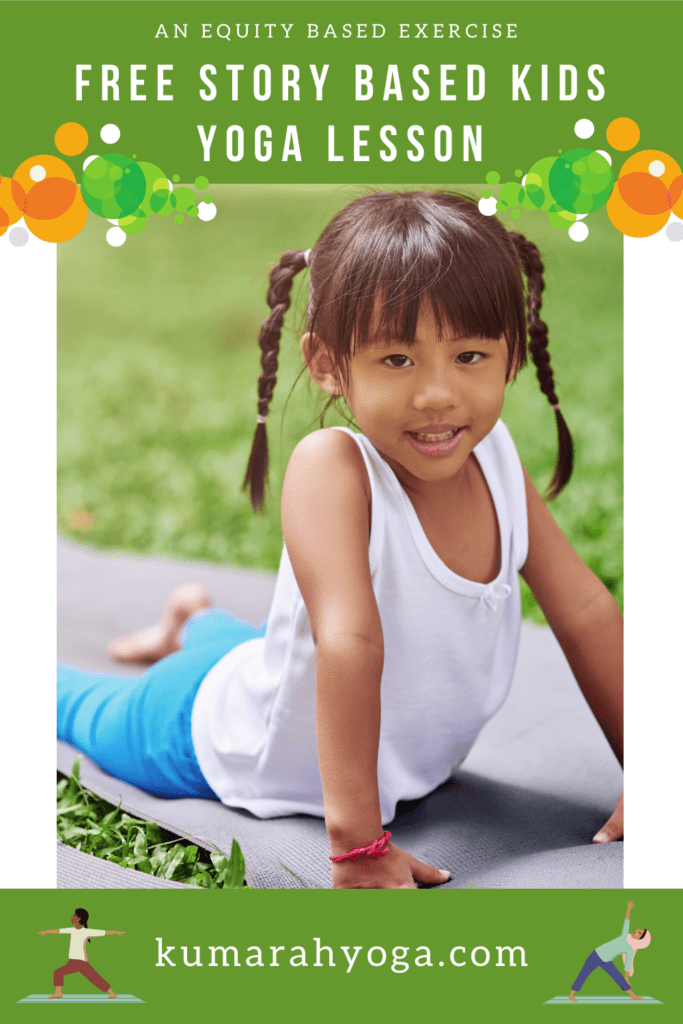
hi Maia,
just found this article you wrote on teaching children of colour..(even though i don’t know that i’m too comfortable saying ‘children of colour’.)..
Anyway thank you for bringing that topic up!
For years i have struggled with the lack of yoga cards, books etc showing pictures of black or brown children. I got to the point where i actually coloured the picture in myself before photocopying so that the child would look ‘black’ or ‘brown’ in them.
it seems everywhere you see photo from books, yoga cards, illustrations on line that it is primarily of white children. I am always so aware of this when i am teaching that the kids don’t see someone who looks like them! On the odd occasion that one of my yoga decks has a picture of a black or brown person/child doing yoga, the children in my class really relate to it and will notice that it looks like their mom or looks like them!
So thank you for bringing it up!
Hi Brona,
So glad you found this article useful. It’s a topic that I found almost NO resources on when I starting teaching in a school with 90% English Language Learners.
And yes, it has been a challenge for me to find appropriate images of students that aren’t white! That’s part of the reason I created my own set of yoga cards for kids, specifically hiring an artist who would be able to give more variety to the illustrations, including kids of all colors and with different headpieces and hairstyles as well!
You can see them here if you haven’t yet 🙂 https://kumarahyoga.com/kids-yoga-flow-cards/
Good luck to you and thank you for reading and teaching yoga and mindfulness to kids!